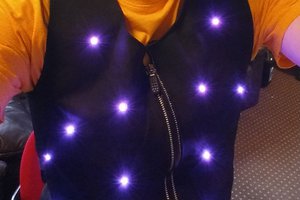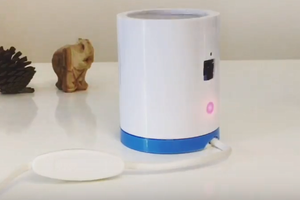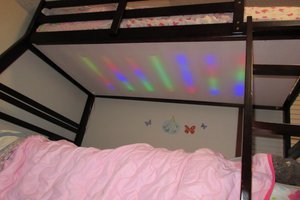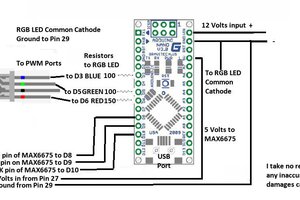Electronics
I tested all of the electronics first by wiring the PIR sensor and mosfet to the Arduino nano. A 5V 2A wall adapter was wired into the inputs of the mosfet, and I also wired the Arduino nano directly to the input ports of the mosfet. I used a single LED as an output to test the system. After the motion control worked and illuminated the LED, I went on to wiring all of the LEDs inside the PVC pipe.
PVC Pipe
I took two strands of wired and tied a weight to the end of them, dropping them through the PVC pipe, so that I had a positive and ground wire running the entire length of the pipe. I then took a hook, and hooked the wires through each individual hole along the pipe, leaving a 4in tall loop at each LED hole. After all the wires were looped through, I cut all of them and wired them accordingly to the LEDs, with a 220 Ohm resistor on the positive end of the LED. I wired the pipe in sections, with a T joint in the middle of the pipe to prevent sag and in order to make it easier to transport.
Enclosure
I used an extra cardboard box as a temporary enclosure. I cut a hole in the end for the PVC pipe to feed through, a hole in the top for the PIR sensor to stand out of, and small holes in the side of the box to run the power wires.


 Michele Scaramuzzi
Michele Scaramuzzi

 Films4You
Films4You